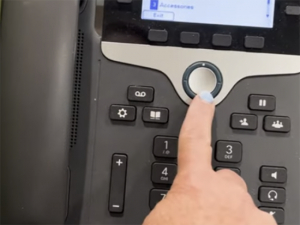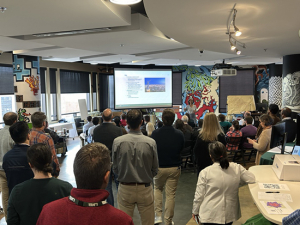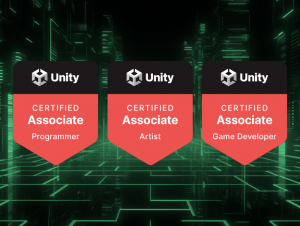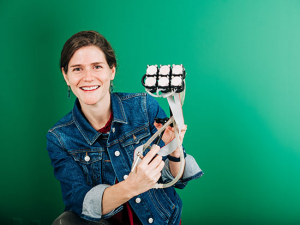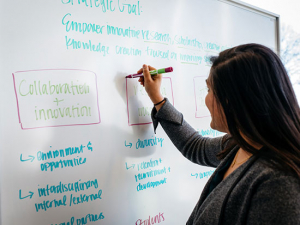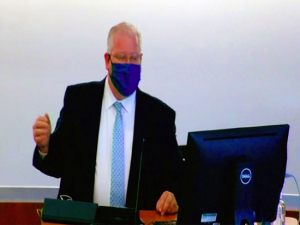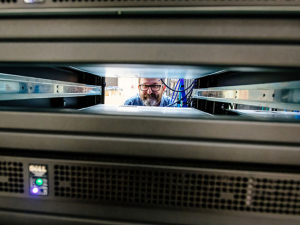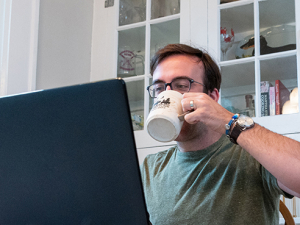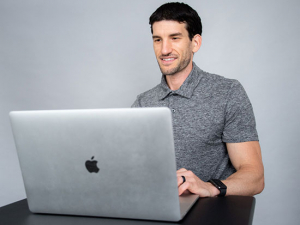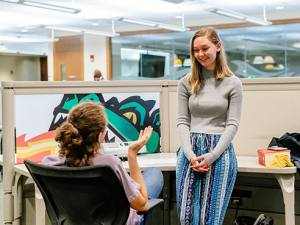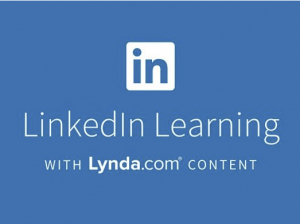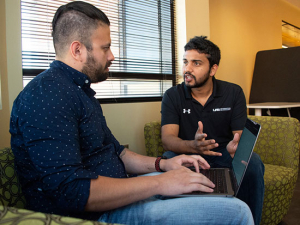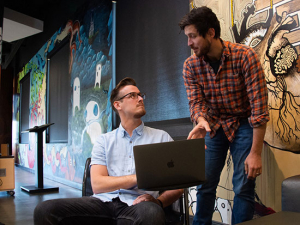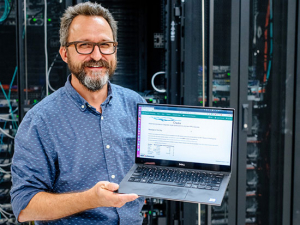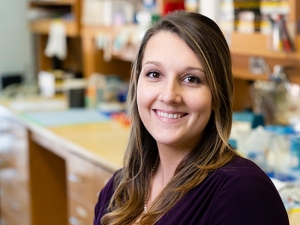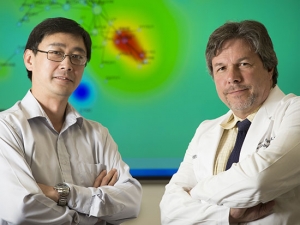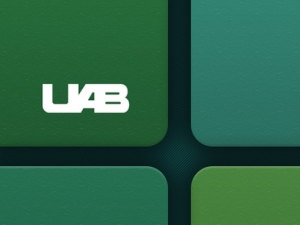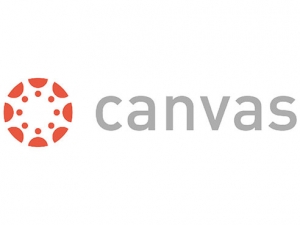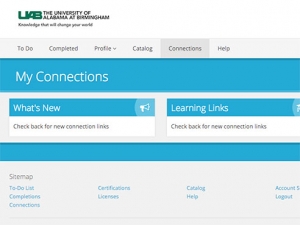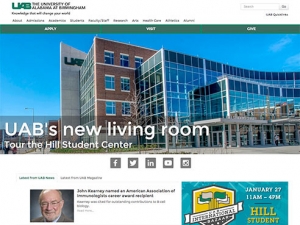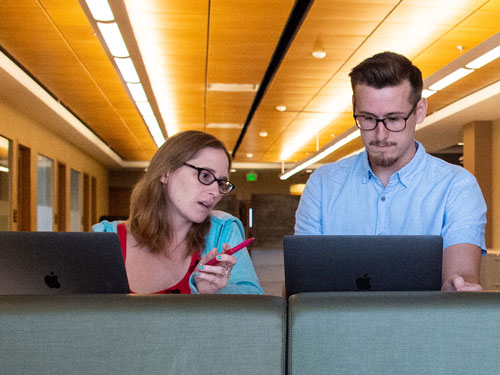 Undergraduates Ryan Randles Jones and Mitchell Moore at work in the Research Computing offices. “I am pretty well versed in programming, but this is much different than anything I’ve done,” Jones said. “My favorite part has been learning everything I can and realizing that there are so many different knowledge sets in the wider world of computer science.”UAB IT’s Research Computing team has its offices in The Edge of Chaos. Some days, Ishan Patel and Mitchell Moore felt like they had slipped right over the edge.
Undergraduates Ryan Randles Jones and Mitchell Moore at work in the Research Computing offices. “I am pretty well versed in programming, but this is much different than anything I’ve done,” Jones said. “My favorite part has been learning everything I can and realizing that there are so many different knowledge sets in the wider world of computer science.”UAB IT’s Research Computing team has its offices in The Edge of Chaos. Some days, Ishan Patel and Mitchell Moore felt like they had slipped right over the edge.
Patel, a senior from Gulf Shores, and Moore, a junior from Birmingham, were the first two undergraduates hired into UAB IT Research Computing’s new paid internship program when it launched in January.
The good news: They were getting one-of-a-kind experience on the cutting edge of biomedical Big Data research, and they were getting paid. The bad news: When you’re on the cutting edge, things can get hairy.
“We’ve experienced a lot of software,” Patel said. “Ansible, Bash scripting, Python, Ruby, Ansys — we’re always watching webinars and training videos.”
“You’re constantly adapting to new technologies,” Moore added. “You’re never comfortable. It can be overwhelming at times, but we get through.”
‘Real work on interesting problems’
And that is a great introduction to high-performance computing, said Ralph Zottola, Ph.D., assistant vice president for research computing at UAB. “We never have a boring day. It’s not for everyone, but people who like it tend to really like it. Our hope is that our interns get so interested that they’ll stay and work for IT. But if not, they will be able to demonstrate that they’ve done some real work.”
Working in the learning placeIn this series, UAB Reporter explores campus internship programs — in areas of strategic interest — through the eyes of the students, staff and faculty who make them successful. |
Earlier this year, Zottola’s team launched UAB Research Computing On Demand, a portal that gives users access to its Cheaha supercomputer — the state’s fastest — through any web browser. That dramatically lowers the barrier to entry for researchers and faculty looking to tap into the 3,000 cores of computing power in Cheaha.
The interns — the group also includes computer science doctoral student Trupesh Kuman, electrical and computer engineering graduate student Chirag Shetty and computer science undergrads Ryan Randles Jones and Nicolas Valladares — have helped with the On Demand interface. They now are implementing a major upgrade — a way to register for Cheaha access in a single web-based form. The current procedure is to send an email to Research Computing, and a developer creates each account manually.
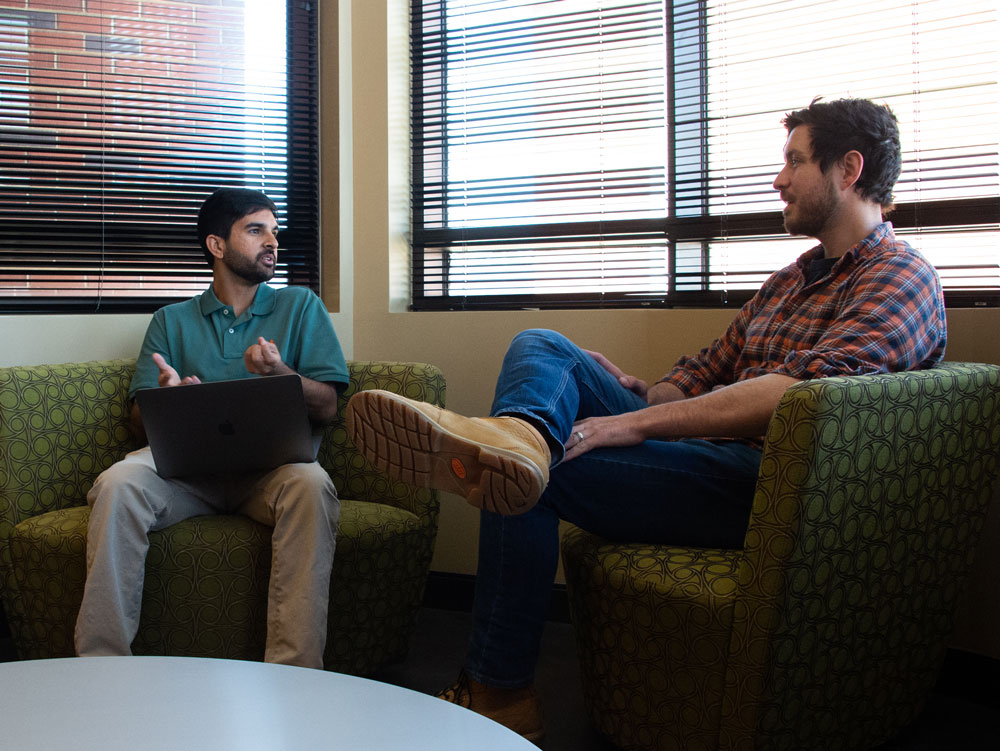 Undergraduate Ishan Patel and Scientist William Monroe. “We’ve experienced a lot of software,” Patel said. “We’re always watching webinars and training videos.”
Undergraduate Ishan Patel and Scientist William Monroe. “We’ve experienced a lot of software,” Patel said. “We’re always watching webinars and training videos.”
From complex to one-click
“We’ve been working on ways to expedite registration, automate where we can and take out the hard steps,” said Kuman, who already had experience using Cheaha for his doctoral research in deep learning. “We’ve taken all the complex steps and put them into one click. Now everything is at your fingertips.”
Research Computing’s investment in automated software-deployment processes made it possible for the undergraduate interns to contribute effectively from the beginning, said John-Paul Robinson, high-performance-computing architect for UAB IT. “The projects are more focused” than in the previous iteration of the Research Computing internship several years ago, Robinson said. “That helps people who are learning computer science and software engineering figure out where they can fit in. By automating all these little bits that it can take years to learn, our interns have been able to contribute. It’s really nice to see they have a stake in the software that we’re building.”
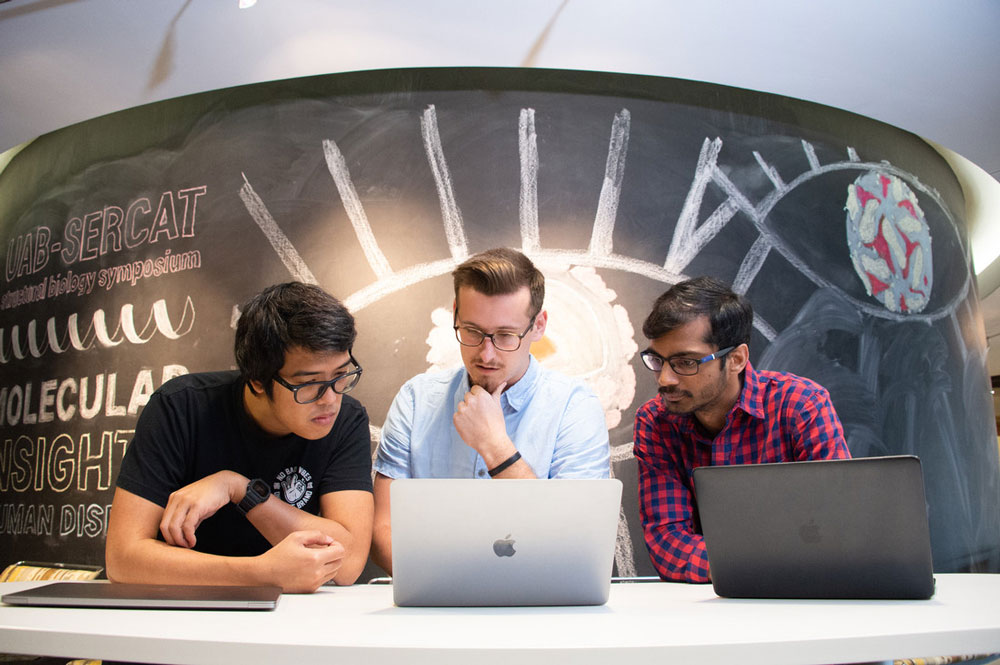 Intern Mitchell Moore (center) with software developers Louis Chen (left) and Eesaan Atluri (right). When the interns started, "we did everything the hard way," Moore said. "What took us a week we can now do in a matter of minutes."
Intern Mitchell Moore (center) with software developers Louis Chen (left) and Eesaan Atluri (right). When the interns started, "we did everything the hard way," Moore said. "What took us a week we can now do in a matter of minutes."
“What makes the intern position so successful is the range of experience,” Moore agreed. “When we started, we did everything the hard way. What took us a week we can now do in a matter of minutes.”
“And now when there are new interns they can boot up within a day,” Patel said.
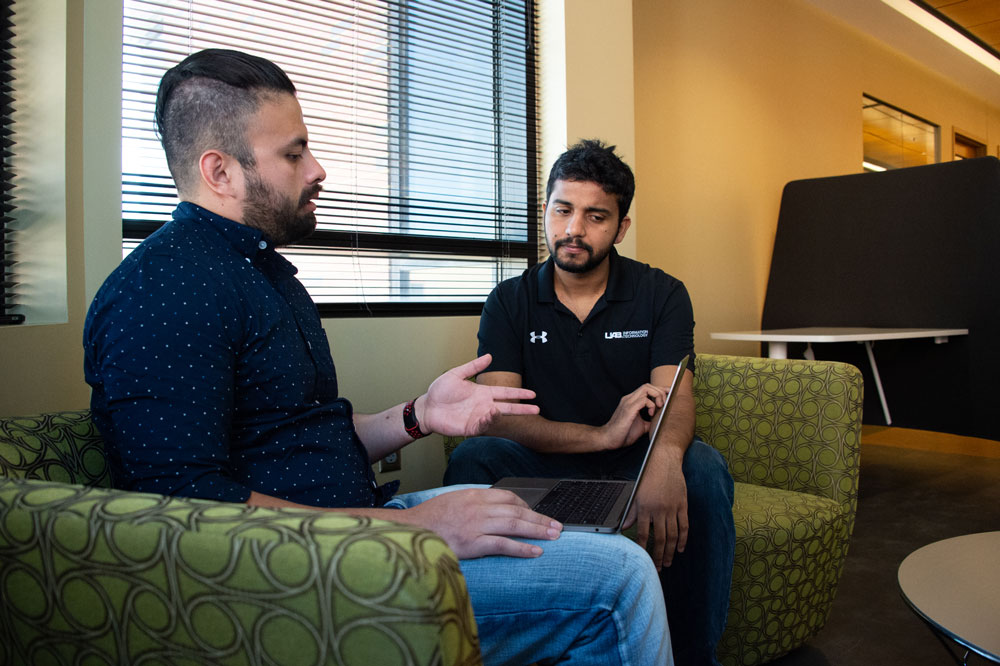 Undergraduate Nicolas Valladares and software developer Ravi Tripathi. "You're constantly adapting to new technology, and you realize it's a team effort," Valladares said.
Undergraduate Nicolas Valladares and software developer Ravi Tripathi. "You're constantly adapting to new technology, and you realize it's a team effort," Valladares said.
Lots to learn
Jones is the newest recruit; she joined the internship program in May. “I am pretty well versed in programming, but this is much different than anything I’ve done,” she said. “My favorite part has been learning everything I can and realizing that there are so many different knowledge sets in the wider world of computer science.”
“We never have a boring day. It’s not for everyone, but people who like it tend to really like it. Our hope is that our interns get so interested that they’ll stay and work for IT. But if not, they will be able to demonstrate that they’ve done some real work.” |
“You get the theory in class, but here you get a lot of real-world experience,” Valladares added. “You’re constantly adapting to new technology, and you realize it’s a team effort.”
“We’re thrilled that we’re able to give students some exposure to a variety of interesting problems,” Zottola said. “If they demonstrate that they’ve done some real work, that makes them so much more marketable. We also are giving them exposure to a discipline they may not have thought of before. We need so many people in the IT space and research computing is an even more difficult niche to fill. Plus, they seem to be having fun.”
“We are,” Valladares said. “Absolutely.”
